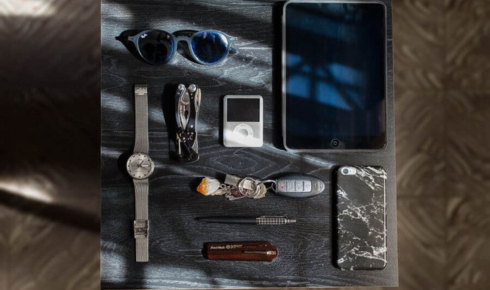Why Concealment is Important in Daily Life
The decision to carry a self-defense tool or other essential items discreetly reflects a wider shift toward personal responsibility and vigilance. As the world changes, so too have daily routines, with more people seeking practical ways to protect themselves and their loved ones without drawing unnecessary attention. According to the Pew Research Center, roughly a third of American adults report at least one firearm in their household, demonstrating the normalization of self-protection. This pervasive trend makes it increasingly necessary to adopt strategies and tools such as concealed carry clothing that allow you to integrate protection seamlessly into your everyday routine while maintaining a low profile.
Effective concealment goes beyond hiding items under fabric; it helps users blend in confidently across environments. Whether on public transit, shopping, socializing, or jogging, keeping security measures hidden reduces awkward questions and unwanted attention. It also fosters preparedness for calm, efficient responses. Paired with good habits and responsibility, discreet carry methods empower independence and peace of mind daily.
Legal Basics and Guidelines
Familiarity with the law is crucial when carrying self-defense tools, such as pepper spray, knives, or firearms. The legislation varies by state and can require permits, training, or ban certain items. Violations can result in fines, legal complications, or the loss of rights. Staying informed about regulatory changes is crucial for maintaining safety and community well-being. Regularly reviewing local statutes and attending community seminars or online legal update groups can help build confidence and credibility, contributing to a culture of safe and lawful carry.
Choosing the Right Gear for Your Lifestyle
Selecting the right equipment for concealed carry is a complex process that depends on various factors. It’s essential to consider your daily activities, such as business attire, casual clothes, and travel. Light, moisture-wicking clothing is ideal in hot climates, while layered jackets or vests are suitable in colder environments. For activities involving movement, gear should be stable and have a grip-friendly design. Accessibility is crucial, and zippers, clips, and retention features should function reliably under pressure. Breathable, flexible fabrics prevent discomfort and ensure the item fits you comfortably. Experiment with different options and read user reviews to ensure your daily kit works for you and reinforces safe routines.
Balancing Comfort With Security
Striking a comfortable balance is both critical and highly personal. An uncomfortable setup can distract, cause irritation, or tempt you to abandon safety measures entirely. Start at home by wearing your gear and performing your usual activities—such as cooking, working at a desk, or even lounging—to pinpoint potential issues like rubbing, pinching, or shifting. Minor adjustments, such as switching to a different type of belt or opting for a padded holster, can make a significant difference over time.
If discomfort persists, consider trying different brands or products tailored specifically to your size and shape. Prioritizing detachable components and adjustable features may allow you to fine-tune your setup throughout the day. The end goal is a system that feels so natural, enabling you to adapt to various situations, you forget it’s even there—reliable, invisible, and ready at a moment’s
Training and Practice Resources
Skill development is essential, regardless of your experience level. Regular, hands-on training with a Level 2 experience from instructors builds confidence and reinforces best practices for quick, safe access to your tools. Consider supplementing live courses with home dry drills, where you rehearse drawing and re-securing gear safely and efficiently.
- Schedule refresher classes annually or whenever new equipment is introduced to your routine.
- Participate in scenario training to simulate real-life decisions and responses.
- Engage with online forums and peers for feedback on your technique and gear setup.
Continuous education means you’re not just mentally, but physically, prepared to make sound decisions under pressure.
Technology and Innovation Updates
The world of discreet carry is moving quickly. Innovations—such as ultra-lightweight, sweat-wicking fabrics or smart holsters—are making it easier and safer than ever to integrate self-protection into modern lifestyles. Following relevant safety statistics helps guide future purchases and informs wise policy decisions at both household and societal levels.
Stay plugged in to industry news, and don’t be afraid to ask questions or try new advancements. Adopting modern solutions keeps you on the cutting edge, providing more options for comfort and concealment as your needs evolve. The most responsible practitioners are lifelong learners, always adapting and improving based on the latest insights and best practices.
Integrating safe, discreet, and modern everyday carry strategies is more than just a trend—it’s an evolving personal responsibility. With the right mindset, equipment, legal knowledge, and ongoing commitment to learning, anyone can develop habits that emphasize both preparedness and peace of mind, all while maintaining comfort and discretion.


